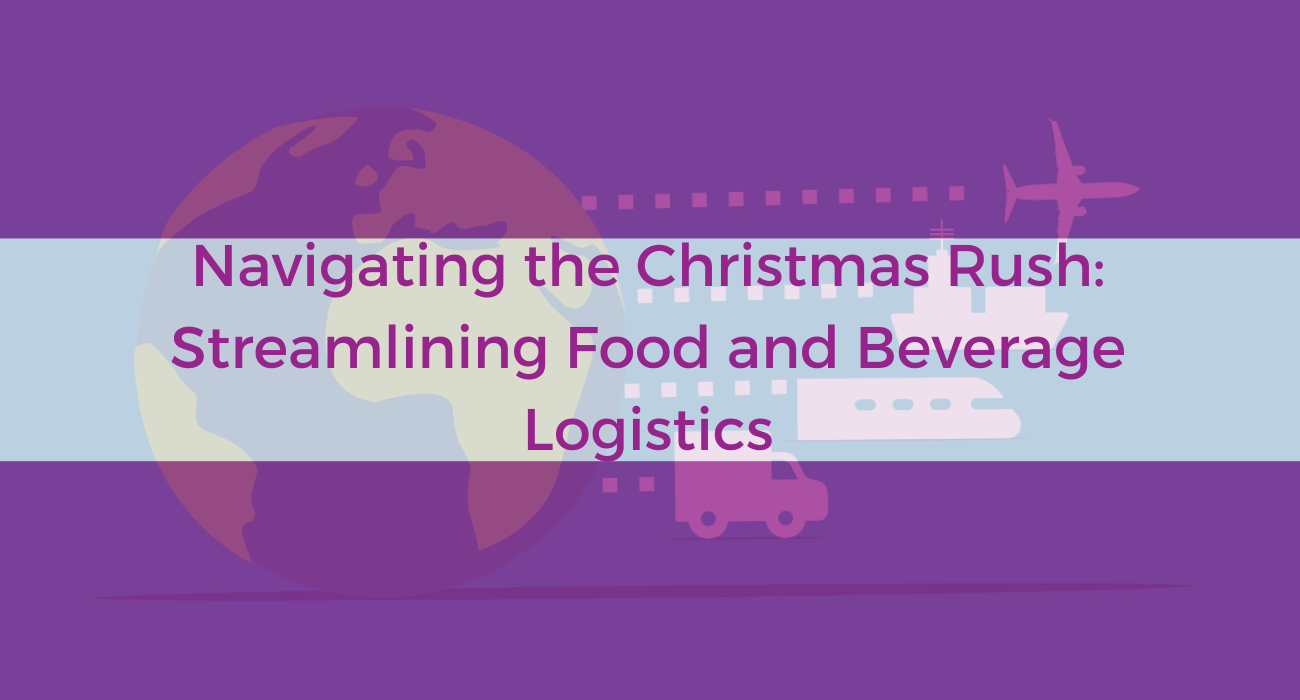
Navigating the Christmas Rush: Streamlining Food and Beverage Logistics
Embracing Efficiency Amidst Holiday Chaos
It’s no secret that food and beverages are key ingredients for a successful Christmas, and many of our clients’ technology helps to support the peak season and beyond. For businesses in these industries, this means navigating through peak demand, supply chain challenges, and logistical intricacies. As we delve into the heart of the festive period, businesses are increasingly pressured to enhance efficiency, sustainability and adaptability to meet the ever-evolving demands of customers.
Understanding the Logistics Landscape
The holiday period often brings a number of challenges for the food and beverage industry, ranging from delays in the supply chain to staff shortages and fleet capacity issues. The key to successfully navigating these challenges lies in having a robust and fully integrated ERP system that leaves no room for hidden information or operational blind spots.
Demand Planning – A Roadmap for Success
The first step in the process is to have a full understanding, and full visibility, of your impending, expected, and forecasted demand. Having a clear demand plan will allow you to work that through each step of the logistics process:
- What raw ingredients will you need to have available and when?
- How will demand fluctuations affect the production process and factory resources required?
- How will it impact production line maintenance schedules?
- What fleet capacity – down to route optimisation – will be needed to fulfil orders on time and in full?
Particularly when it comes to fleet optimisation, a fully integrated ERP solution can make a world of difference if you’re using an outsourced or 3PL (Third Party Logistics) provider.
Third-Party Logistics: The Importance of Integration
For businesses outsourcing logistics to third-party providers, the integration of ERP becomes even more pivotal. Tracking the dispatch, delivery, and potential returns of shipments is vital for maintaining inventory accuracy, streamlining invoicing processes, and nurturing strong customer relationships. SAP’s touchpoints, APIs, and technical terminology facilitate seamless information exchange with third-party logistics providers, ensuring transparency and efficiency.
Real-Time Visibility
Taking a granular approach, a fully integrated ERP system can provide real-time route tracking visibility. This not only enables businesses to define the most efficient routes but also allows them to share information about the product’s journey with customers, fostering optimal consumer-to-brand engagement.
Supplier De-risking
On the flip side, ERP solutions can help de-risk supplier performance by identifying potential shortfalls and risks. In today’s volatile circumstances, diversifying supplier options can be a strategic move to safeguard supply routes to some extent.
Conclusion: Making an ERP the Linchpin of Operational Excellence
As we gear up for the peak Christmas period, ensuring that your logistics are seamlessly orchestrated is more crucial than ever. Whether it’s optimising the ordering process, fine-tuning factory setting, meeting sustainability goals, or tackling supply chain volatility, a fully integrated ERP solution becomes the linchpin, unlocking the power of information and data within your business.




